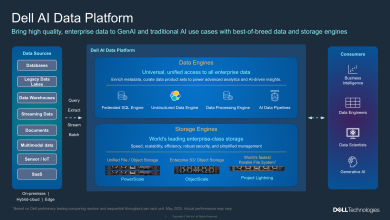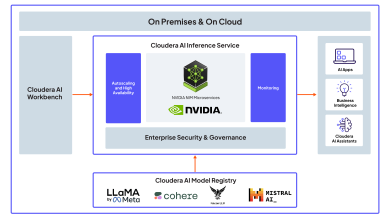ePLDT VITRO is Building at Hyperscale to Elevate PH Data Centre Market Positioning to a Regional Transit and Data Centre Hub

ePLDT, the ICT subsidiary of the PLDT Group, is now in pole position to strengthen the Philippines’ status as the next hyperscaler hub in the Asia Pacific.
In the past few years, data centres have emerged as a crucial foundation to the country’s emergent digital economy; with hyperscalers now turning their attention to the country for increasing requirements and growing operations that connect individuals, businesses, and the global community.
ePLDT is a pioneering force in the Philippines’ burgeoning data centre industry.
In addition to customized multi-cloud and cybersecurity solutions, the company has been building state-of-the-art data centres known as VITRO.
It has the largest data centre network in the country to date.
The next economic driver
But VITRO data centres represent more than just meeting space demands. They reflect ePLDT’s longstanding commitment to help the government bring in more economic opportunities, support the country’s digitalization efforts, and create a positive impact on the communities it operates in.
Much like how BPOs became a catalyst for economic prosperity in the 90s, the local data centre industry is expected to be the country’s latest growth driver.
“As our VITRO network attracts more investments into the country, expect it to generate more jobs, develop new business opportunities and help position the Philippines as the regional destination of choice for hyper scalers – inevitably contributing to inclusive economic growth,” says Gary F. Ignacio, Chief Data Center Officer of ePLDT.
Far-reaching effects
Building digital infrastructure has ripple effects on job creation, far beyond its mere construction, management, and operations.
In the case of Google as reported by consulting firm AlphaBeta in October 2021, unlocking new revenue streams and expanding their business led to the tech giant indirectly supporting over 110,000 jobs in the Philippines. And this number will likely only grow as more digital firms expand their reach here.
For ePLDT, VITRO will attract global cloud and content providers, encourage them to expand their local footprint and create a halo effect of more job creation.
“After over two decades of launching VITRO Pasig in 2000 – the country’s first data centre – ePLDT has grown into the market leader with 10 data centre facilities nationwide,” says Ignacio.
“We have an 11th currently under construction,” he added.
And as hyper scalers set up shop in these VITRO sites, the everyday Filipino ultimately benefits.
Bigger, faster, safer, and more sustainable
Touted as its biggest and most ambitious data centre to date, VITRO Sta. Rosa is rising at a five-hectare property in the booming industrial city of Sta. Rosa, Laguna.
Designed with LEED standards in mind, the facility will also champion sustainability practices in design, supply, and building operations; including rainwater collection, wastewater reuse, renewable energy use, and lowest realistic power usage effectiveness (PUE) for the Philippines, among others.
“VITRO Sta. Rosa will be constructed with the highest level of diversity and reliability. It will be equipped with at least three domestic fibre routes from PLDT and other telco providers and will serve as the most ideal location for Availability Zones and Points-of-Presence of hyper scalers, as well as for critical systems of enterprises,” explains Ignacio.
The facility will be connected to the PLDT Group’s widest domestic and international fibre network, which has connectivity to the country’s richest IP ecosystem through the VITRO Internet.
VITRO Sta. Rosa is also designed to be Tier-3 Certified and Tier-4 Ready, with the highest reliability uptime as it includes the construction of an on-site Meralco power substation. Interconnection to several other substations further minimizes the risk of power failure, ensuring business continuity for hyper scalers so they can provide the best end-user experience to their customers.
Logistically accessible via three major highways, VITRO Sta. Rosa will also serve as a physical fortress for data centres. Due to its geographical location, it is relatively safe from flooding, liquefaction, earthquake damage, and other natural disaster risks.
Building on an opportunity
More revealing is that a 12th data centre is also in the pipeline – a hyperscale facility with a power capacity of no less than 100MW.
With the data centre market projected to have a CAGR (compound annual growth rate) of 13% between 2020 to 2025, the Philippines should enjoy far greater interest from hyperscalers and global enterprises versus its ASEAN neighbours, according to a recent Vanguard Report by S&P Global.
A report from research firm Arizton that was cited by KMC Savills last June 2022 said the Philippines logged one of the highest growth rates in emerging data centres in Southeast Asia, alongside Malaysia and Thailand.
This report factored in the growth of the online gaming industry, outsourcing, BPO, and the adoption of cloud, big data, and IoT as contributors to its rising trajectory.
“To seize such opportunities, we strive to create value for our customers by simplifying the complexities of their digital transformation journey. This begins with a thorough understanding of their needs, fostering collaborative partnerships, and proposing solutions that prioritize outcomes over technology-driven approaches,” highlights Ignacio.
With a reputation built strong, ePLDT is committed to optimizing and managing its clientele’s tech investments, enabling partners to leverage their resources, concentrate on core business operations, and pursue sustainable growth.
“Even as a market leader, we listen carefully to our customer’s pain points and partner with the biggest global names in the business in designing our facilities. Our role as the country’s premiere data centre operator is to harmonize these insights, and implement and concretize them through our data centre builds. Together with PLDT, we continue to build infrastructure that will allow both private and public sectors to be globally competitive,” said Ignacio.
“After all, we look today at our data centres as the country’s engines of growth,” he closed.




